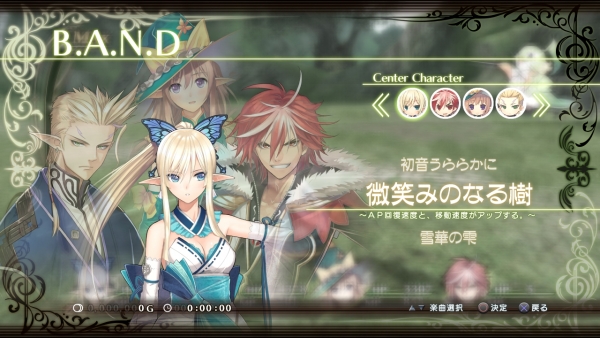In our last major write-up for Shining Resonance, we learned about Sega’s desire to impress upon players the use of music and nature as conceptual focal points for the game. Images for the B.A.N.D. system were released then, but not with any real explanation of what it was about. Siliconera offers some insight here. In addition, this entry from the BeastNote blog (a fanblog for Japanese fighting game community news that also covers other games, like Shining fighting game Blade Arcus) offers additional insight into the game from translations off of the official Shining Resonance website. Hit the break to learn more!
BeastNote offers some more detailed insight on the battle system too. Like the most recent Tales Of games, battles outside of plot encounters are initiated by approaching an enemy on the field, and on the map this enemy is a stand-in for any number of enemies you may actually fight. You can attack multiple times and form combos but only within the bounds of your characters’ Action Points, or AP. The AP for the player character will be displayed at the bottom of their model during battle, though as of recent screenshots it’s not something that can be seen. AP can be refilled either over time or through Force Moves, which are apparently synonymous with Break Attacks. They cost MP to use and are performed by combining an L button and a face button (Triangle, etc..)
Note that in screenshots we’ve seen of battle, MP can reach into the high hundreds. While the AP system is somewhat reminiscent of the Chain Capacity system from Tales of Graces, the interplay between the AP and MP system in Shining Resonance sounds quite complex and make for a mostly aggressive battle system. I would think you won’t often be at a loss for attacking options – while the varying cost of Break Attacks (especially combo’d Break Attacks) can offset the large amount of MP given to characters, it is a very attractive option when someone is trying to refill their AP. And of course, regular attacks that cost AP actually refill your MP gauge, so it seems combos and general strategy will involve alternating between the two types of attacks. I’m expecting to see an elaborate combo system just based off of these details, and as someone who loves flashy and long combos it sounds fun. There isn’t much reason to suspect anything inherently overpowered just yet – attacks will probably have varying amounts of cooldown, with perhaps the laggier attacks that are more powerful designed to serve as combo finishers.
Outside of credit to the already cited entries, I’d like to give credit to this Gematsu entry for the images.

